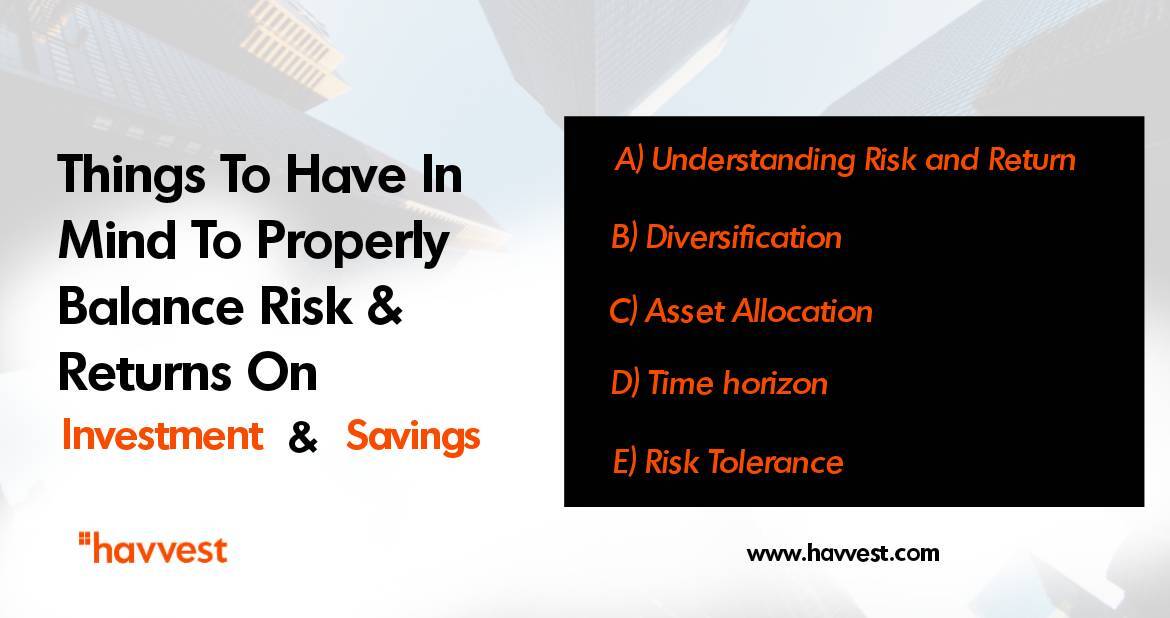Let’s blow your mind!
Research has shown that, biologically, individuals with a certain genetic variation tend to be more prone to taking risks and seeking out novel experiences. This has raised other questions, like: does it mean we should blame biology for the laxity some individuals possess when it comes to taking risks?
Well, far from it. Risk-taking is inevitable in life. Risk is the likelihood or probability of a negative outcome occurring. The idea of risk is commonly applied in finance, strategy, and sometimes in our emotional dealing to assess the possible effects of certain decisions or circumstances, usually to help you make the right decision.
To maintain financial security and stability, it is crucial to strike the ideal balance between risk and return. In this post, we will explore the subpoints below which will help us understand why we need to have a balance when dealing with risk and return on investment and savings.
These pointers are excellent for comprehending what risk and return are as well as the reasons why we should have that balance while discussing the topic of balancing risks and returns.

- Understanding risk and return
- Diversification
- Asset allocation
- Time horizon
- Risk tolerance
1. Understanding Risk and Return
In the world of finance, risk refers to the possibility of losing money or failing to meet investment goals. Return, on the other hand, is the gain or profit earned from an investment. These two concepts are intertwined, and understanding the relationship between them is crucial to balancing risk and return.
Generally, investments that offer higher returns also come with higher risks. Low-risk investments like government bonds typically have lower returns, while high-risk investments like real estate offers higher returns. Therefore, finding the right balance between risk and return is a personal decision that depends on one’s financial goals and risk tolerance.
With Havvest, you get to invest your money while letting us handle the concern of balancing risk and return; after that, you will receive the specified return at the time you have chosen.
2. Diversification
Diversification refers to spreading investments across different assets and industries to minimise risk. The idea is that if one asset class or industry performs poorly, other investments will cushion the impact. For instance, an investor may diversify their portfolio by investing in different sectors of real estate like commercial or industrial real estate sectors.
3. Asset Allocation
Asset allocation refers to the distribution of investments across different asset classes. It aims to balance risk and return by ensuring that the portfolio is diversified and not too heavily weighted towards one asset class.
4. Time Horizon
The time horizon refers to the length of time an investor plans to hold their investments. It is a crucial factor in balancing risk and return because longer time horizons allow for more significant potential returns and higher risk tolerance.
5. Risk Tolerance
Risk tolerance refers to the level of risk an investor is willing to take on. It is subjective and varies based on factors like age, financial goals, and personality. An investor with a high-risk tolerance may be comfortable investing in high-risk assets like stocks and real estate. In contrast, an investor with a low-risk tolerance may prefer low-risk investments like bonds and cash.
In summary, balancing risk and return on investment and savings is crucial to achieving financial security and stability. Understanding risk and return, diversification, asset allocation, time horizon, risk tolerance, investment strategies, and savings strategies can help individuals make informed decisions and achieve their financial goals.
At Havvest, we provide people with the chance to diversify their portfolios, lower their risk, and ultimately increase their return on investment. With Havvest, you can invest and save now with the assurance that your risks are balanced and the returns are guaranteed.




